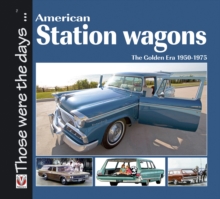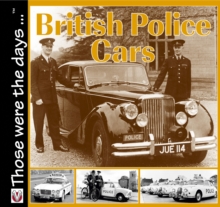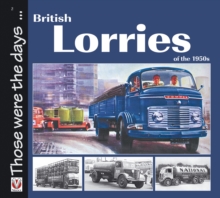
Paperback
Description
The MG, from being a Morris car modified in the corner of a backstreet workshop, evolved into a sports car in its own right.
The demand for this fiery little car caused the production to move to four different and progressively larger sites in and around Oxford, finally moving out of the city ten miles away to Abingdon and a factory that might have been custom built for it.
This factory was on the site of a tannery that had inflated to over twice its size catering for the 1914-18 wartime demand for its leather products.
The coming of peace caused it to deflate back to its previous level of production, leaving empty the rows of large hangars that had housed the wartime production effort.
It was to this factory that Cecil Kimber, who had resigned his position as Managing Director of Morris Garages, brought his brain-child that he called the MG.
Twin rows of eighteen inch (45cm) high raised tracks were built.
The chassis was brought from the workshop where it been made and, after the assembling of its suspension, it was mounted on to the track to start its journey from one stage to the next, finally emerging as a complete motor car. The car would then be tested on the factory's own test track before being deemed fit for its eagerly awaiting new owner.
The men who took part in the assembling of the car were but a part of the organisation that went toward the finished article.
Managers, Office staff, Storemen, Inspectors, Painters, Test drivers, Labourers and cleaners were all members of the great team, all had their part to play.
As they worked together so did they play together, ground was obtained for a football pitch, room was found in the town for a snooker club and a place where the men could join for a well earned drink.
This later developed into a modern Sports Club with football, hockey and cricket pitches.
The risk of fire in the factory was always present and to cope with this the factory had its own fiire engine and a full time fireman augmented when needed by a volunteer crew of factory workers, who trained in their spare time.
MG Abingdon's famous racing reputation gained in the 1930s made it the obvious place to site BMCs Competition department with its maiden venture the 1955 Le Mans 24 hour race. The 160, many never seen before, pictures in this book chronicle every aspect of the factory from its opening amidst great euphoria in 1930 to its closing amidst great recriminations in 1980.
Information
-
Item not Available
- Format:Paperback
- Pages:96 pages, 164 Illustrations
- Publisher:Veloce Publishing Ltd
- Publication Date:07/07/2007
- Category:
- ISBN:9781845841140
Other Formats
- Paperback / softback from £12.85
- EPUB from £8.24
Information
-
Item not Available
- Format:Paperback
- Pages:96 pages, 164 Illustrations
- Publisher:Veloce Publishing Ltd
- Publication Date:07/07/2007
- Category:
- ISBN:9781845841140










